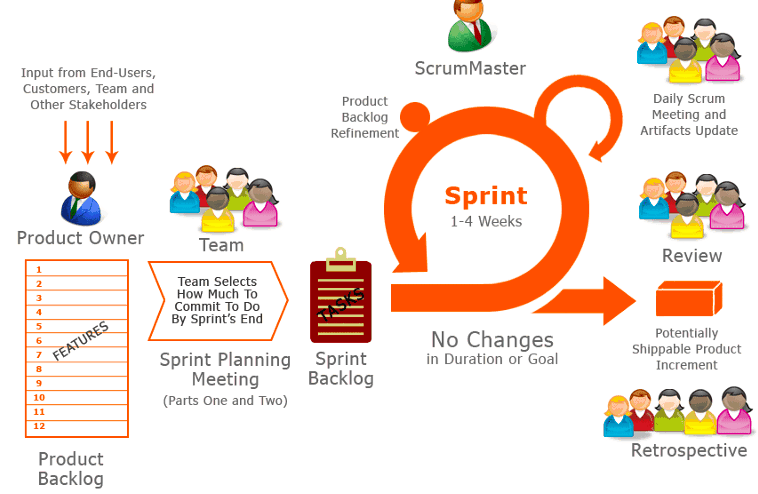
If you are looking at moving your software development process to Agile (News - Alert), you are making the right decision. Agile is now recognized as the most effective development methodology and is being adopted by many more companies, so what do you need to know about it that will help you to get things moving smoothly? Some of the most important elements of the Agile process deserve individual attention, and one you will need to consider is the length of each sprint or iteration. So, what’s it all about?
The Scrum and the Sprint (News - Alert)
Let’s begin by putting together a simple explanation of the scrum and the sprint. The whole idea of agile is that it is designed to encourage cross-border interaction and team-work, in order to speed up the development process and give the customer a product in the quickest possible time. The scrum is a term that describes all the meetings, different roles, and various tools and elements that come together to enable the Agile process to provide results. It is important that all involved know their role in Scrum so that they can operate as effectively as possible.
So, what is the sprint? The sprint is a timeframe in which the next product increment has to be completed. Essentially, it is the timebox you give yourself and the team to deliver a commitment you jointly make. So, how long that timeframe should be and what would be some good rules and benchmarks to consider. Most leading CSM training providers are relatively flexible, but recommend a date range staying within which will deem the most efficient use of the resource, product planning and keeping the options to change direction reasonably open.
How Long for a Sprint?
How long should a sprint be? There are some general rules of thumb that should be adhered to, but before we go on to explain these, an important preliminary point: the length of a sprint should not be changed once it has been agreed upon. This is essential if you are to ensure that your Agile project goes to plan, as it is all too easy to add a bit of time here and there. Doing so defeats the object. A sprint is a set timeframe – discuss it with the scrum members, agree to it, and stick to it or you will not achieve your aim.
So, here’s a general rule of thumb: typically, the industry has demonstrated that anything from 2 to 4-week sprints is the most effective. They are big enough to maintain the focus for the entire team and small enough to pivot and remain flexible when priorities change.
The one-month rule is usually applied by development companies as it is an adequate length of time for an Agile project to run its course. Some projects may require a sprint of only a week, others maybe three weeks, but if you allow more than a month, you are not achieving the aim of using Agile development – to get things done more quickly!
Specialized Sprints
There may be occasions when you need to break the usual rules and extend the length of the sprint. These could be due to unforeseen circumstances or to incorporate holiday periods. It may also come about at the request of the customer. However, it is always best to try and stick within the one month rule, and planning around holidays and such should be done in advance.
A final point: don’t spend too long considering where to set the finish of a sprint. Look at the complexity of the project, and take it from there. Pick anything between 2, 3 and 4 weeks and see what works and what does not. At the end of the day, agile is about keeping your mind open in search of the efficiency that works for you, so don’t be afraid to experiment.
